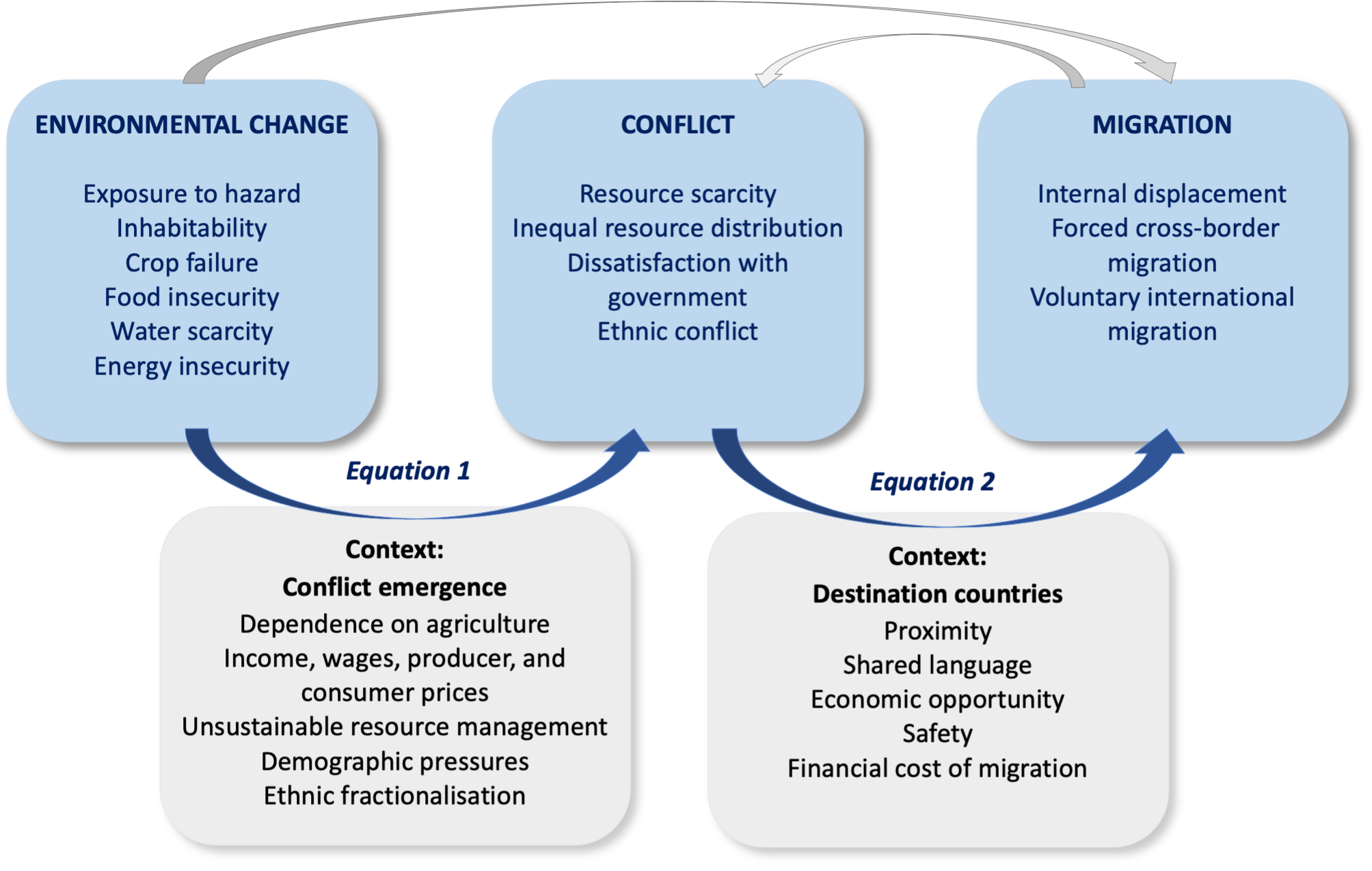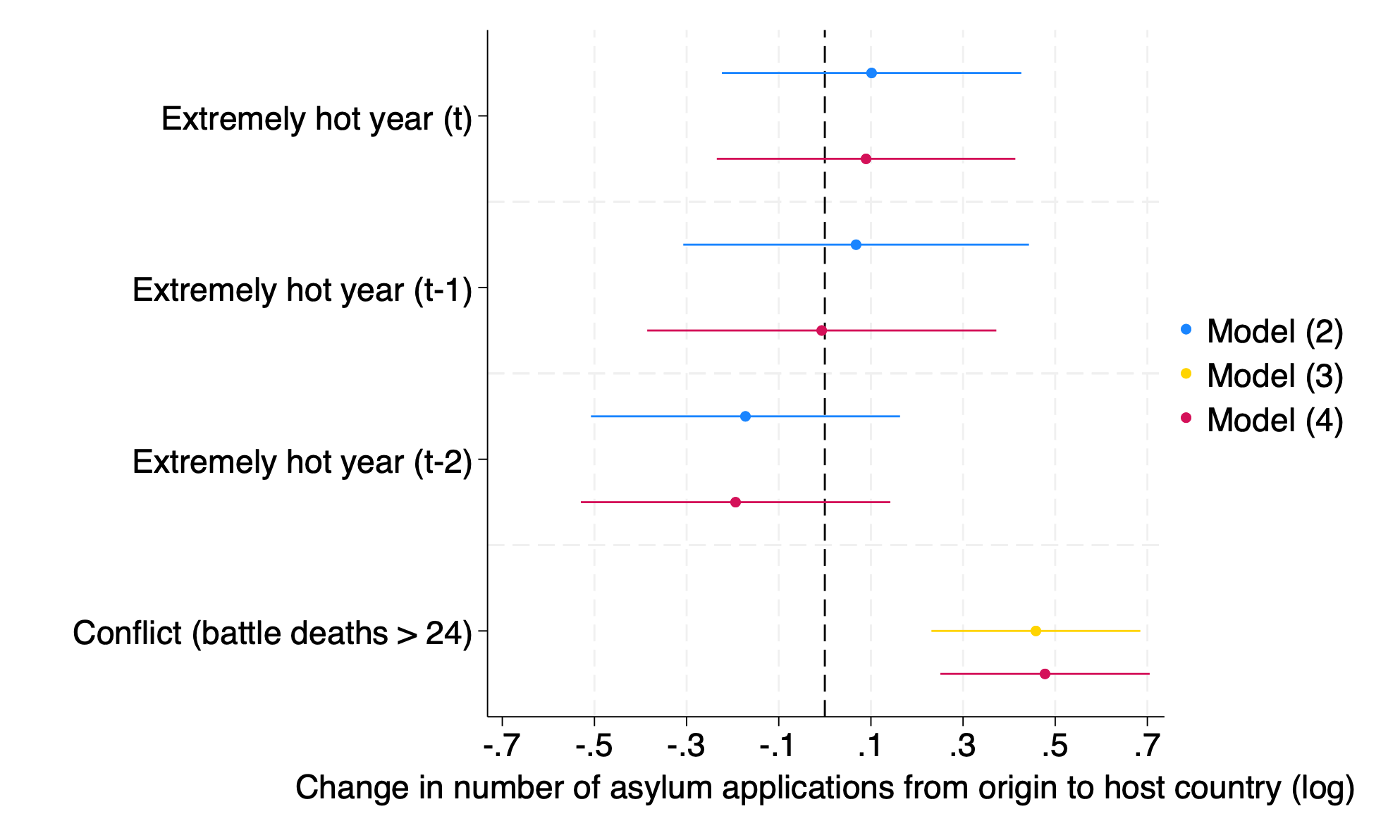Published in the Vienna Yearbook of Population Research 2024, a novel study by the Leverhulme Centre for Demographic Science’s Jasmin Abdel Ghany investigates the relationship between temperature irregularities, armed conflict and forced migration flows in West Asia and North Africa.
West Asian and North African countries continue to experience rising temperatures, and armed conflicts in several countries have driven mass displacement in the last two decades. However, little was known about the relationship between temperatures, climate and migration in this region.

The study is the first to investigate the climate-conflict-migration nexus at a regional level. Jasmin Abdel Ghany constructed a rich dataset drawing on asylum application data from the Office of the High Commissioner for Refugees (UNHCR) and a range of further data sources to investigate the effect of extreme temperatures on asylum flows between 29 countries in West Asia and North Africa in 2000-2019, using armed conflict as a mediator.
Migrants often relocate to adjacent countries. Social, cultural, economic and legal opportunities and restraints shape regional migration corridors and so migration patterns heavily depend on local contexts. Unlike existing research on the link between climate, conflict and migration, the study used origin-destination fixed effects in addition to a range of controls to account for the various contextual factors that influence migration patterns between countries.
The findings show that extreme temperatures in two consecutive years increase the probability of armed conflict by 42.5% in the following year. This suggests that extreme temperatures may induce conflict in the 29 West Asian and North African countries studied.

There was also a strong association of 45.8 percentage points between conflict and asylum applications. These findings are consistent with existing literature that suggest climatic anomalies may increase conflict and that conflict is a strong predictor of migration.
Although temperature-conflict and conflict-migration links were identified in the study, there was only a weak indication that conflict mediates the relationship between extreme heat and asylum flows.
While the mediating role of armed conflict was not statistically significant, the study provides a better understanding of the link between climatic irregularities, conflict and migration. The study also highlights the importance of using regional samples and accounting for contextual factors when analysing environmental migration.
Jasmin Abdel Ghany said ‘This study adds to the growing literature that extreme temperatures, armed conflict and forced bilateral migration within West Asian and North African countries are interlinked. It is therefore vital that future research continues to disentangle the factors that make the populations in these countries vulnerable to climate-related conflicts and displacement.’
Future research suggested by this explorative study includes studying high-resolution environmental and conflict data, and using non-traditional data sources to explore unrecorded mobility and migration flows. These studies could overcome the limitations of traditional data sources and benefit from the inclusion of other environmental indicators.
The study concludes, ‘While the results of this study provide no strong evidence on the short-term relationship between temperatures and forced migration, the long-term pressures of climate-related conflict remain unexplored.’
The full article, ‘Temperatures, conflict and forced migration in West Asia and North Africa’, can be found in the Vienna Yearbook of Population Research 2024.



